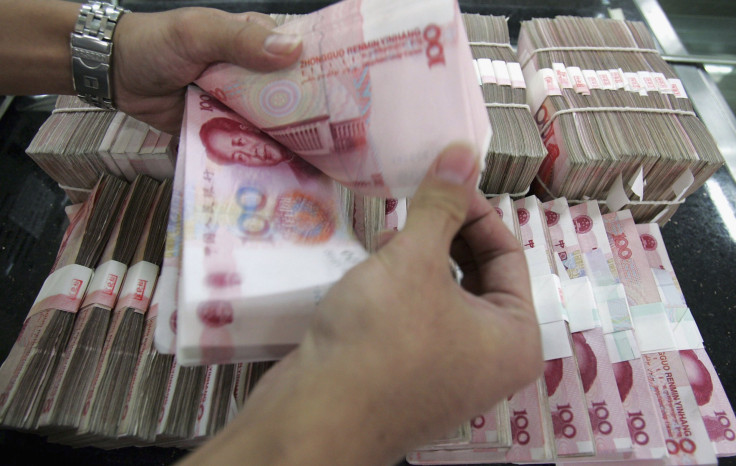China Pushing Banks To Boost Lending In Move To Juice The Economy Without Encouraging Capital Flight

China’s central bank has made its latest attempt to manage slowing growth in the world’s second-largest economy.
On Monday, Beijing said it is cutting the portion of customer deposits that Chinese banks have to hold in reserve. The move is a bid to push cash into the slowing economy without seeing the money simply swapped into dollars and sent abroad by nervous citizens and companies. That would threaten to renew pressure on the Chinese currency, which has weakened over the past month.
Though Chinese foreign currency reserves have fallen sharply in the last year, the pace of decline ebbed somewhat in January, to $99.5 billion, creating a sense that the worst may have passed. The number was $108 billion in December, wrapping up a year in which they declined by half a trillion dollars to $3.3 trillion.
In December and into early January, the Chinese renminbi, also known as the yuan, came under relentless pressure as money flowed out, and the central bank had to use its war chest of dollars to keep the slide from turning into a rout. Now, by allowing banks to lend more by cutting the money they have to hold back, Beijing is signaling that it has the situation under control.
“The Chinese are selling this as sign of confidence,” said Brad Setser, a senior fellow at the Council on Foreign Relations in Washington. “They now believe that they can release more money from the banks’ reserves without putting too much new pressure on the currency.”
After markets closed on Monday, the People’s Bank of China cut the ratio of customer deposits that big banks have to keep on hand to 17 percent, a reduction of 0.5 percentage points. That frees up tens of billions of dollars that banks, mostly state-owned, can now lend out to Chinese companies.
In theory, it’s a form of monetary stimulus for the Chinese economy, which grew 6.9 percent in 2015 after years of torrid growth of 10 percent and above. The Chinese government is now trying to speed the country’s transition to a services-based economy that’s less dependent on the manufacturing exports that drove its renaissance over the last 30 years.
However, after years of credit-fueled expansion, the pressure is on for Chinese banks to demonstrate they can lend productively with the new liquidity that the central bank’s decision has put at their disposal.
“This shows the PBOC still has room to stimulate markets and the economy, if necessary,” Ryan Lam, Hong Kong-based head of research at Shanghai Commercial Bank Ltd., told Bloomberg News. “One message they want to send is that they have more tools than most other central banks. It’s a positive move and gives reassurance to the investor, at least in the short term.”
The trick will be keeping financial markets convinced that the Chinese authorities can credibly keep the Chinese currency headed downward without crashing. If traders sense another sharp fall is imminent, they’ll try to get ahead of the curve, potentially triggering a stampede by Chinese companies that would just as soon take the easier credit in renminbi and convert it to dollars.
Chinese central bankers considered easing reserve requirements in January as part of their strategy to juice growth, but decided against risking the wrath of currency traders and their own citizens by freeing up too much cash too quickly.
Easier reserve rules would be “too strong an easing signal,” Zhang Xiaohui, an assistant governor at the central bank, said at the time, according to the Wall Street Journal. “We need to put a high emphasis on maintaining the renminbi’s stability when managing liquidity.”
When foreign reserves decline, that means Chinese companies and individuals are taking renminbi out of circulation and taking dollars abroad. So, China will end up with de facto monetary tightening — which would curb growth — unless the central bank replaces the money that exits the country with easier credit at home.
One way to do that is to cut the reserve requirement, Setser said. “People had expected a series of cuts in the reserve requirements this year,” he said.
© Copyright IBTimes 2024. All rights reserved.





















